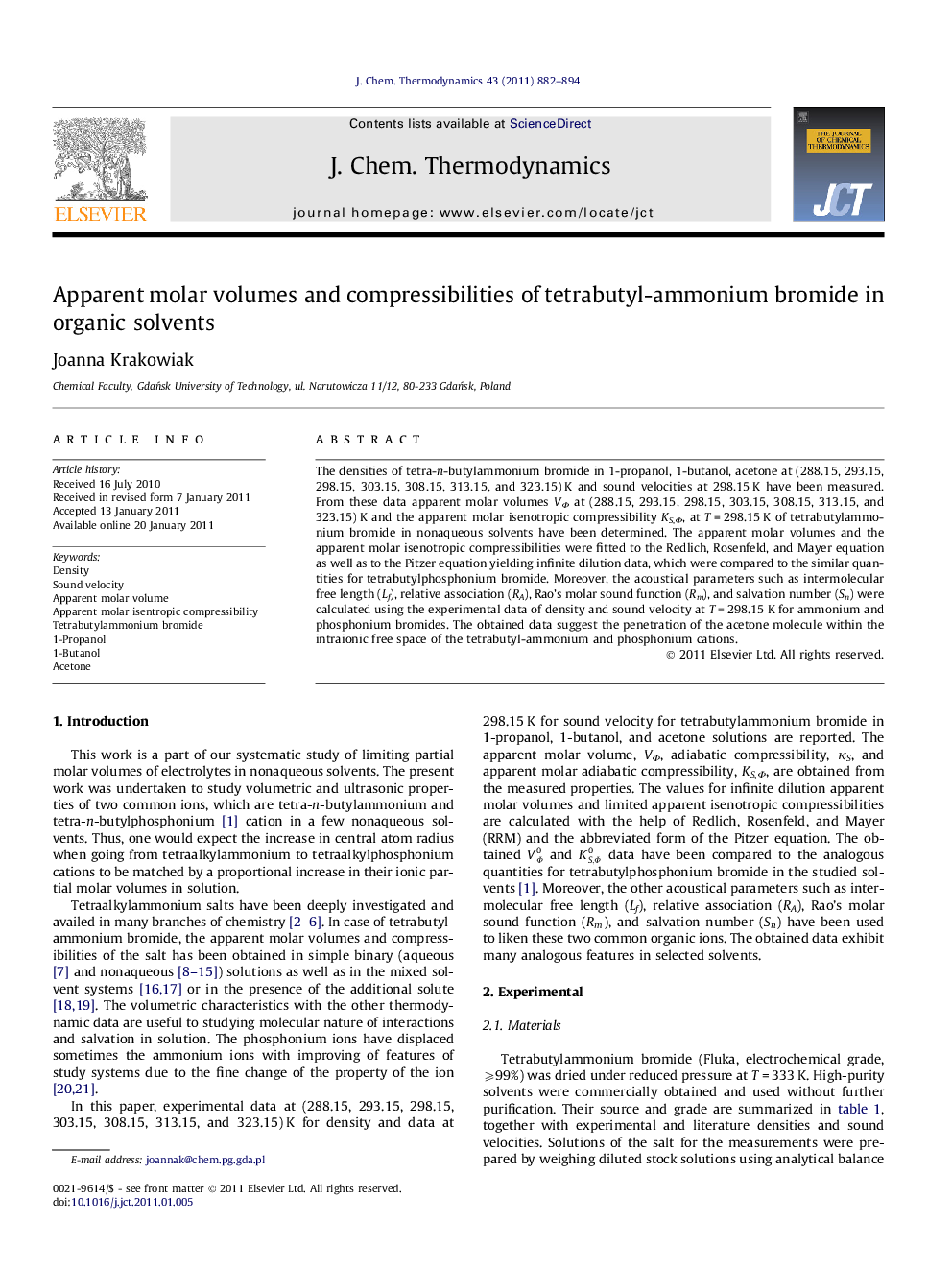| Article ID | Journal | Published Year | Pages | File Type |
|---|---|---|---|---|
| 216631 | The Journal of Chemical Thermodynamics | 2011 | 13 Pages |
The densities of tetra-n-butylammonium bromide in 1-propanol, 1-butanol, acetone at (288.15, 293.15, 298.15, 303.15, 308.15, 313.15, and 323.15) K and sound velocities at 298.15 K have been measured. From these data apparent molar volumes VΦ at (288.15, 293.15, 298.15, 303.15, 308.15, 313.15, and 323.15) K and the apparent molar isenotropic compressibility KS,Φ, at T = 298.15 K of tetrabutylammonium bromide in nonaqueous solvents have been determined. The apparent molar volumes and the apparent molar isenotropic compressibilities were fitted to the Redlich, Rosenfeld, and Mayer equation as well as to the Pitzer equation yielding infinite dilution data, which were compared to the similar quantities for tetrabutylphosphonium bromide. Moreover, the acoustical parameters such as intermolecular free length (Lf), relative association (RA), Rao’s molar sound function (Rm), and salvation number (Sn) were calculated using the experimental data of density and sound velocity at T = 298.15 K for ammonium and phosphonium bromides. The obtained data suggest the penetration of the acetone molecule within the intraionic free space of the tetrabutyl-ammonium and phosphonium cations.
Research highlights► The volumetric and acoustic parameters for But4NBr in acetone, 1-propanol and 1-butanol were obtained and compared with analogous data for But4PBr. ► The correlation between volumetric data for common cations are observed. ► The characteristics suggest the penetration of the acetone molecule within the intraionic free space of the cations.
